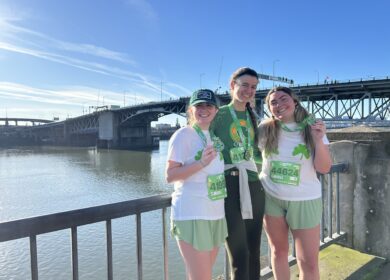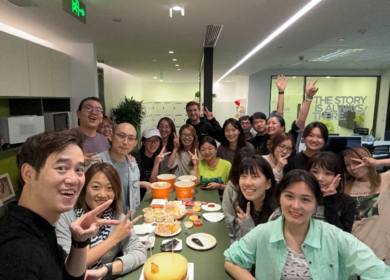By Lauren Ho
The Hoffman Agency, San Jose
In today’s fast-paced, content-heavy world, you only have about 8.25 seconds to capture someone’s attention. That’s right — the average person’s attention span in 2015 is a mere 8.25 seconds.
So, how do you engage an audience whose attention span is even shorter than that of a goldfish?
You invest in the power of visual storytelling.
Here at the Hoffman Agency, we know that a compelling visual can say a whole lot more in eight seconds than a block of text can. And that’s why we’ve made it a priority to elevate our visual storytelling chops. Here are nine examples of brilliant visual storytelling, as well as some tips we’ve picked up along the way.
1. Add a twist to an iconic image or phrase.
When it comes to classic visuals like Nike’s “Just Do It” tagline, our minds are so accustomed to seeing the original version that any little tweak or edit can be surprisingly refreshing. Our CEO wrote a blog post reimagining the dialogue that went down between the NRA and its PR team after the Sandy Hook Elementary School shooting in 2012. This “parody visual” is what accompanied the post.
2. Use design tools like Canva for easy editing.
You don’t need to be a professional graphic designer to create beautiful visuals. There are plenty of free tools out there to help you amp up a boring stock image. Hoffman’s Zix team used a free design tool called Canva to create this stunning visual for its BYOD campaign.
3. A touch of levity goes a long way.
Adding a touch of humor to your visuals is highly effective, especially in the B2B world, where there is such lack of it. We’re not going for stand-up comedy status here, but even something that prompts a smile can be refreshing. And an illustration of the Pope taking a selfie? We’d say that’s worthy of a grin.
4. Provocative language can take it one step further.
Hoffman’s Nautilus team recently developed an infographic and SlideShare as part of its Fitness IQ campaign, which sought to find out just how much the average American knows about health, nutrition and fitness (and judging from the visual below, it’s not much). The punchy one-liner is eye-catching and draws you in. The alliteration isn’t a bad touch either.
5. Anything is possible with illustration.
Even bringing a mom with five arms to life! Hoffman’s Endicia team worked with an illustrator out of Hawaii to create this sketch for Mother’s Day. The goal was to honor “mompreneurs” and the superhero-like qualities they possess — like extreme multitasking!
6. Numbers can be visual too.
Visuals can be powerful for dressing up a statistic or a number. Hoffman’s RoboBusiness team developed an infographic to shine some light on the growth of the robotics industry. The robot visuals add a nice touch and help to spice up what would otherwise be a chart filled with numbers.
7. Capitalize on timely or trending news.
When the power went out in the Superdome during Super Bowl XLVII, Oreo seized the opportunity with a simple, smart tweet that was re-tweeted more than 10,000 times in one hour. In this case, timing is everything.
8. Video adds an extra dimension to visual storytelling.
Chipotle’s animated short, titled “The Scarecrow,” follows the story of a humble scarecrow who, in the midst of factory hell, takes matters into his own hands by harvesting his own vegetables and opening up a burrito stand with a banner that reads, “Cultivate a Better World.” Meanwhile, Fiona Apple’s hauntingly beautiful cover of “Pure Imagination” plays in the background. The film has been recognized not just as an innovative piece of marketing, but as a commendable work of art. Video allows you to incorporate other elements like movement and music to get your visual storytelling to go even further.
9. Be relatable.
Crest certainly knows how to humanize its brand. The company published a series of attention-grabbing images on its Facebook page in the hopes of raising awareness of dental health issues amongst parents. Always make sure that your content is relevant and provides value to your target audience.
Visual storytelling can take your content to the next level and help your brand engage with your audience more quickly than text alone. After all, the human brain processes visuals 60,000 times faster than text, and articles that contain images get 94 percent more views than articles without. There’s no arguing with those numbers. When it comes to visual storytelling, it’s do or die.
For more examples of visual storytelling, click here.











